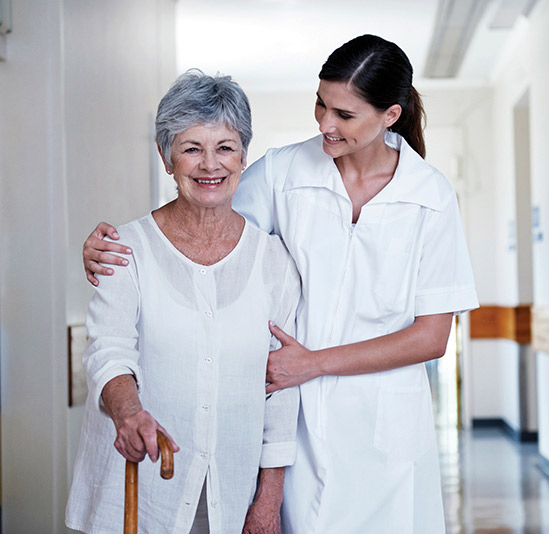 By Katie Bell
By Katie Bell
Preoperative hip mechanics during gait can enhance clinical scores for identifying patients who are less likely to have an adequate clinical response after total hip arthroplasty (THA), according to research from Chicago that may have implications for both preoperative analysis and postoperative rehabilitation.
“I don’t know that gait variables influence postoperative response. I think of these more as indicators of who may need extra attention to achieve a clinically significant response, and what types of interventions they may benefit from,” said study author Kharma Foucher, MD, PhD, assistant professor in the Department of Kinesiology and Nutrition at the University of Illinois at Chicago.
The retrospective analysis of data from a series of prospective longitudinal studies included 124 patients (62 women, mean age 61 years) who had been assessed before and one year after primary unilateral THA using quantitative gait analysis and the Harris Hip Score (HHS), which is largely based on self-reported pain and function. Gait analysis was performed as patients walked at a self-selected speed along a 10-m walkway. Responders and nonresponders were identified using the Outcome Measures in Rheumatology and Osteoarthritis Research Society International (OMERACT-OARSI) consensus responder criteria, modified for use with the HHS.
Of the study participants, 110 were classified as responders and 14 as nonresponders. The sensitivity of predicting a nonresponder based on preoperative HHS alone was 57.1%. However, the combination of preoperative peak hip external rotation moment and preoperative HHS predicted response with a sensitivity of 71.4% and a specificity of 99.1%. The findings were epublished by the Journal of Orthopaedic Research in May.
“Any survey instrument like the HHS has a few limitations for predicting response. One is that it’s subjective. This isn’t bad in and of itself, because obviously the patient is the expert on how he or she feels,” Foucher said. “Using gait analysis or another objective physical or functional measure to complement a survey can help us understand what we might do to help a given patient achieve his or her best outcome.”
Peak hip external rotation moment was 30% lower in nonresponders than responders preoperatively, and 40% lower in nonresponders than responders postoperatively, both statistically significant differences. Sagittal plane hip range of motion was 26% higher in nonresponders than responders preoperatively, but did not differ significantly between the groups postoperatively.
“I speculate that having as much intact transverse plane abductor function as possible is important for clinical recovery,” Foucher said.
Foucher and her colleagues are working to identify simpler clinical tests, or combinations of tests, that do as well or better at predicting THA response, she said. Further, Foucher wrote in the paper, the findings suggest additional analysis of the role of transverse plane hip mechanics could lead to interventions designed to improve clinical response after THA.
However, development of such interventions could be complicated by the surgical techniques used in many THA procedures, said Dana Judd, PT, DPT, PhD, an assistant professor in the Physical Therapy Program at the University of Colorado Anschutz Medical Campus in Aurora.
“The presence of preoperative external rotation moment deficits before surgery seems to lend itself to a preoperative training program to improve it before surgery. However, the muscles responsible for stabilizing the hip in this way are either cut or split during the surgery,” Judd said. “The shift in current postoperative care would be, in my opinion, to focus on movement retraining and stabilization activities for the hip, pelvis, and lumbar spine.”
Source:
Foucher KC. Preoperative gait mechanics predict clinical response to total hip arthroplasty. J Orthop Res 2016 May 4. [Epub ahead of print]








